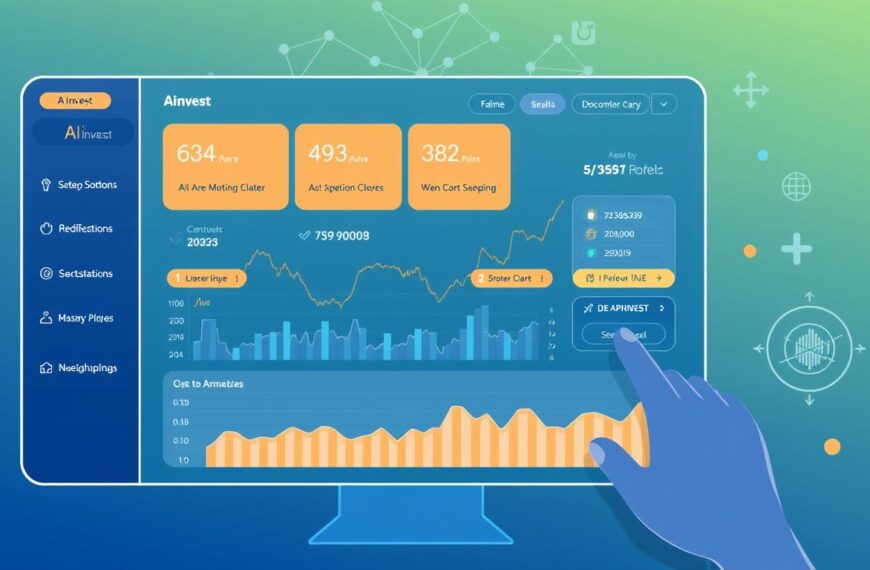In the fast-paced world of trading, success isn’t just about putting in the hours; it’s about making the right quick moves at the right time. For those who thrive in the stock market, the key to consistent profits lies in agility and precision, not just endurance.
The traditional “buy and hold” strategy is giving way to a more dynamic approach: scalping. This involves capturing small, frequent price movements to build significant gains over time. It’s a strategy that requires not just knowledge, but a specific mindset and the right tools.
To succeed, one must be prepared to adapt day by day, making informed decisions based on market fluctuations. With the right guidance, anyone can learn to navigate this challenging yet rewarding environment.
Key Takeaways
- Scalping involves capturing small, frequent price movements for consistent profits.
- A mindset shift is required to move from traditional investment approaches to scalping.
- Success in scalping depends on precision, discipline, and the right tools.
- Adaptability is crucial in the fast-paced trading environment.
- The right guidance can help anyone learn to scalp effectively.
The Hustler’s Mindset: Trading vs. Grinding
In the fast-paced world of trading, the hustler’s mindset is not just about grinding; it’s about making quick, strategic moves. This mindset is crucial for scalping, a strategy that focuses on capturing many small, frequent profitable price movements.
Why Quick Moves Beat Long-Term Holding
Scalping may seem daunting, but with focus and practice, new traders can learn to navigate the fast-paced world of scalping and understand how even small moves in a market can create steady gains. Quick moves can accumulate into significant profits over time, potentially outperforming long-term holding investment strategies in certain conditions.
The Psychology of Fast-Paced Trading
Successful scalping requires a fundamental shift in trading mindset—from patience and waiting to decisive action and quick execution. It demands the ability to make quick decisions, maintain discipline, and manage emotions during rapid-fire trading. Scalpers view market volatility as an opportunity, using price fluctuations to their advantage, and leveraging small price movements to generate steady gains.
Understanding Scalping: The Ultimate Quick-Win Strategy
The art of scalping lies in its ability to generate quick returns through precise and disciplined trading. Scalping is a strategy that involves making numerous small trades throughout the day, taking advantage of minor price movements in the market.
What Makes Scalping Different from Day Trading
Scalping differs significantly from other forms of day trading in terms of its focus on extremely short holding periods and high trade frequency. Unlike traditional day traders, scalpers aim to capitalize on small price fluctuations, often holding positions for mere minutes or seconds.
For more insights on making quick money through trading, you can explore additional resources such as this article that provides valuable tips for aspiring traders.
Key Characteristics of Successful Scalpers
Successful scalpers possess certain key characteristics, including the ability to make quick decisions, maintain a high win-loss ratio, and manage time effectively. They also focus on strategies that involve technical analysis and are adept at reading price action.
By mastering these skills, a trader can achieve significant returns in a short time, making scalping a potentially lucrative trading strategy for those who are disciplined and skilled.
Essential Tools for Real Hustlers Trade, Stock Game, Quick Moves
In the fast-paced world of scalping, having the best tools is crucial. To make money scalping, traders need to react swiftly to market movements, and that requires the right technology.
Trading Platforms That Support Fast Execution
Scalpers need low-latency direct-access brokers that enable lightning-fast trade execution. A robust trading platform with rapid order execution, customization options, and risk management tools is essential. Look for platforms with tick charts or one-minute charts to closely monitor short-term price movements.
Technical Indicators for Quick Decision Making
Effective scalping also depends on the right technical indicators that provide actionable information for quick decision-making. Indicators such as moving averages and Relative Strength Index (RSI) can help scalpers identify trends and potential reversals. It’s crucial to choose indicators that don’t overwhelm the trader with too much data.
For those looking to develop their technical skills, there are various courses and educational resources available, including links to tutorials and webinars that can enhance trading strategies.
Mastering the Market’s Most Volatile Hours
Understanding the dynamics of the market’s first and last hours is essential for traders looking to capitalize on price volatility. The market behaves differently during these periods compared to the mid-day trading session.
The First Hour: Opening Bell Strategies
The first hour of trading is crucial as it sets the tone for the day. High volume and significant price movements characterize this period. Traders need to be aware of overnight news that can impact price action and be prepared to act quickly.
Strategies for navigating the opening bell include identifying gap openings and understanding morning trends. This requires analyzing early price action patterns and being prepared to adapt to changing market conditions.
The Last Hour: Closing Bell Opportunities
The last hour of trading is marked by increased action as institutional investors adjust their positions. This can lead to significant volume and price movements, creating opportunities for traders.
| Time | Market Activity | Trader’s Focus |
|---|---|---|
| First Hour | High Volume, Significant Price Movements | Gap Openings, Morning Trends |
| Last Hour | Increased Institutional Activity | End-of-Day Positioning, Price Action |
By understanding the unique characteristics of the market during the first and last hours of the trading day, traders can better navigate the challenges and opportunities presented by high volume and price volatility, ultimately making informed decisions to trade effectively.
Five Scalping Strategies for Quick Profits
For traders looking to profit from fast-paced market conditions, mastering scalping strategies is crucial. Scalping involves making multiple trades in a short period to capitalize on small price movements. Here are five effective scalping strategies that can be employed.
Market Making: Playing Both Sides
Market making involves placing buy and sell orders on both sides of the order book to profit from the spread. This strategy requires precise execution techniques and effective risk management.
Breakout Scalping: Riding Momentum
Breakout scalping entails trading on market momentum after the price breaks out of a key level, such as a support or resistance zone. Identifying potential breakout points and confirming valid breakouts are crucial.
| Scalping Strategy | Description | Key Focus |
|---|---|---|
| Market Making | Profiting from the spread by placing orders on both sides | Execution Techniques |
| Breakout Scalping | Trading on momentum after a breakout | Identifying Breakout Points |
| Mean Reversion | Taking positions when prices are overextended | Identifying Overbought/Oversold Conditions |
Mean Reversion: Betting on Price Normalization
Mean reversion scalping involves taking positions when price is overextended, aiming for it to revert to its average. This requires identifying overbought or oversold conditions and executing counter-trend trades.
News-Based Scalping: Profiting from Announcements
News-based scalping involves profiting from the volatility that follows economic announcements or significant events. Traders must prepare for scheduled announcements and manage increased volatility.
Market Depth Analysis: Reading the Order Book
Market depth analysis involves using Level II market data to determine where large supplies of buyers or sellers await. This helps in identifying potential support and resistance levels.
By mastering these five scalping strategies, traders can enhance their ability to profit from various market conditions. Effective risk management and precise execution are key to successful scalping.
Risk Management for Fast-Paced Trading
In the high-speed world of scalping, robust risk management strategies are essential. Scalping involves making numerous trades in a short period, which amplifies the potential for significant losses if not managed properly.
Setting Proper Stop-Losses for Quick Exits
One effective way to mitigate potential losses is by setting a stop order. For instance, some traders place a stop under the lowest price reached in the first 10 minutes of trading. A stop order is an instruction to buy or sell a stock at the market price once it has traded at or through a specified price. This helps limit losses if the trade does not move in the anticipated direction.
Position Sizing to Protect Your Capital
Proper position sizing is critical in managing risk during day trading. Traders should calculate their trade sizes based on their account size, the volatility of the market, and their risk tolerance. This ensures that no single trade or stock exposure jeopardizes a significant portion of their capital, allowing for more consistent trading performance over time.
| Risk Management Strategy | Description | Benefit |
|---|---|---|
| Stop-Loss Orders | Automatically sell a stock when it falls to a certain price | Limits potential losses |
| Position Sizing | Adjust trade size based on account size and risk tolerance | Protects capital from significant drawdowns |
From Novice to Pro: Building Your Scalping Skills
Becoming a proficient scalper requires a strategic approach and gradual skill development. To master scalping, one must start with the basics and progressively build their expertise.
Starting Small: Paper Trading Techniques
Paper trading, or simulated trading, is an effective way to practice scalping strategies without risking real capital. It allows novice traders to hone their skills, understand market trends, and master order execution. By utilizing paper trading platforms, individuals can gain valuable experience and refine their techniques before entering the live stock market.
Developing Discipline and Emotional Control
Scalping demands discipline and emotional control, as trader decisions are made within a short time frame. To develop these skills, it’s essential to create and maintain a detailed trading journal, tracking not only results but also execution quality and decision-making processes. Enrolling in a course that focuses on scalping can provide structured guidance and help traders improve their performance over time. By staying disciplined and continually learning, scalpers can enhance their ability to make profitable trades based on price movements and stock behavior.
Conclusion: Fast Hands, Faster Profits
By combining the right mindset, tools, and strategies, traders can unlock the full potential of scalping and achieve faster profits. Throughout this article, we’ve explored the essential elements of successful scalping, including the importance of a trader’s mindset, the role of technical analysis, and the need for effective risk management techniques.
Scalping is not just about speed; it’s about precision, discipline, and consistent execution. The skills developed through scalping can benefit other trading and investment approaches, creating a more versatile and adaptable market participant. While scalping presents challenges, including time commitment and psychological demands, these can be overcome with proper preparation and support.
For those interested in pursuing scalping, recommended courses and practice regimens can help. By mastering scalping, traders can achieve significant financial growth and develop their “fast hands” for “faster profits” in the stock market.






